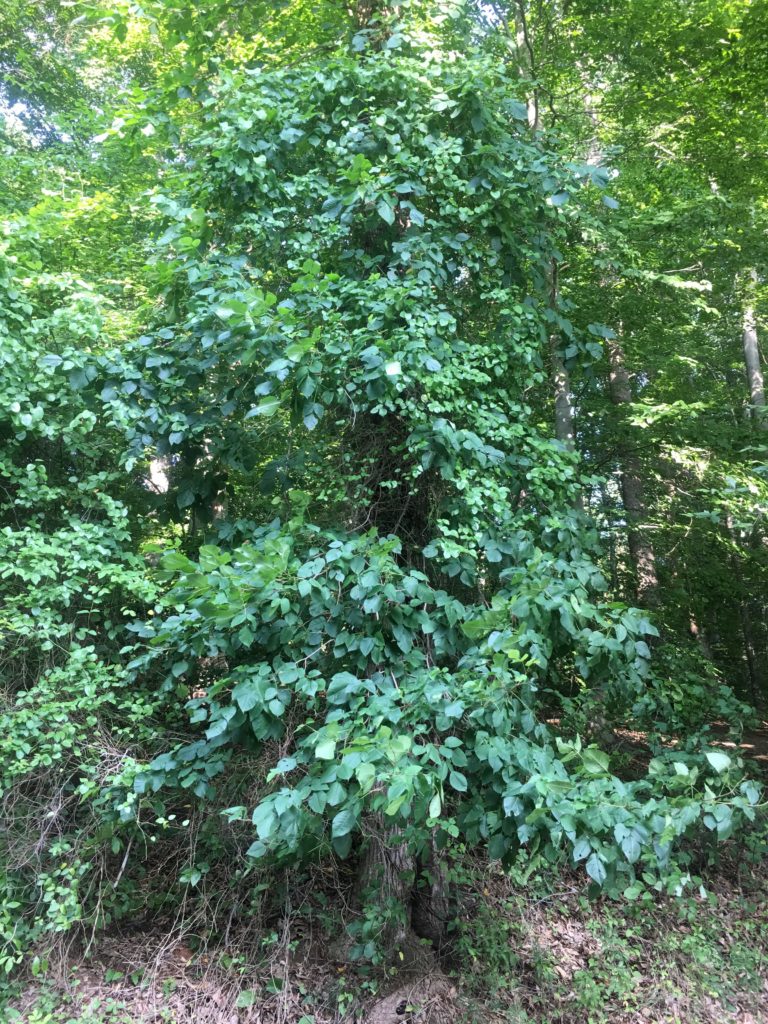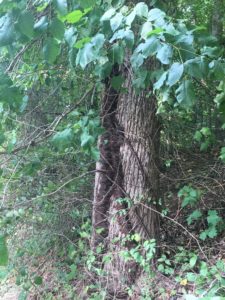Toxicodendron radicans or better known as eastern poison ivy is a hardy fast growing poisonous plant that thrives in the summer. If you come in direct contact with the leaves and or vines, it can cause urushiol-induced contact dermatitis. The oil from the plant, urushiol oil, causes a delayed allergic reaction. Depending on how many times you have been exposed to the oil, will determine how quickly you develop the outward signs of the reaction. The rash, which is itchy, red, and swollen, can last for several weeks. The urushiol oil is persistent. If your dog or clothing come in contact with the oil, then you, it can still cause the rash!
You are probably wondering why a tree service would have a blog post about poison ivy? Well, these vines also grow on trees and sometimes fool folks into thinking that their tree is full of foliage. The image below shows a trees whose lower foliage is almost completely all poison ivy.

Closer inspection shows an established poison ivy vine growing up the side of the tree.

Poison ivy grows on live as well as dead trees. It thrives as an imposter of live tree foliage. When trees are covered with poison ivy, and need to be removed, it creates an added safety element for our crew. Not only can contact with the oil cause the rash, but the oil is also dispersed as the debris are processed through the chipper. Care must be taken when removing and processing the debris from trees with the foliage imposter, poison ivy.
References:
Contact dermatitis
Toxicodendron radican
Poison Ivy info
Poison Ivy Facts
